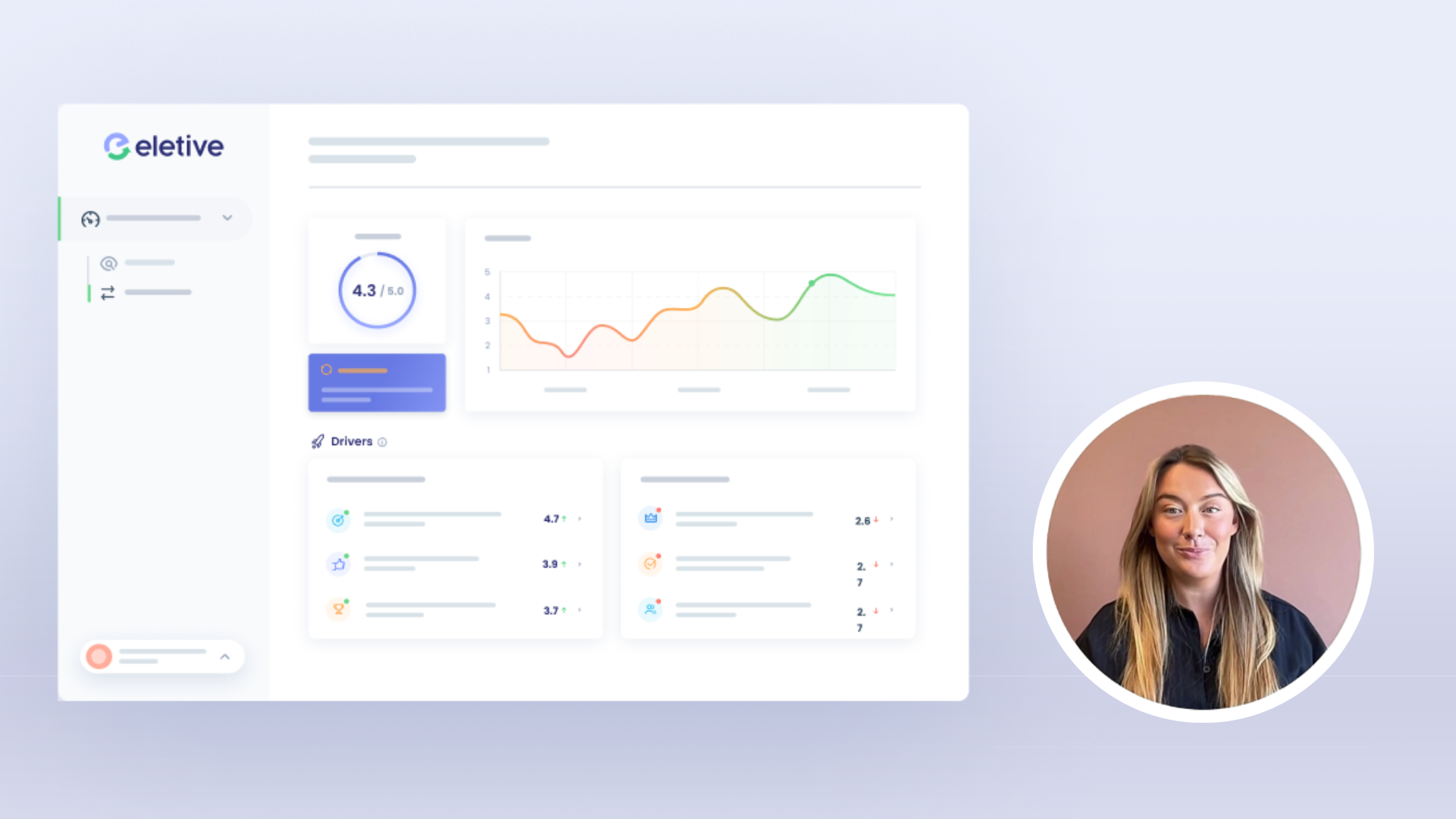Managing team performance is a critical task for any organisation. It's the key to unlocking productivity, engagement, and success. But how do you effectively manage team performance? What strategies can you employ to ensure your team is performing at its best?
In this article, we delve into the world of performance management. We explore strategies that can help you optimise your team's performance, whether they're working in the office or remotely.
We'll discuss the importance of setting clear goals and cultivating a culture of feedback. We'll also look at how to conduct effective performance reviews and the role of recognition and rewards in motivating your team.
Furthermore, we'll explore the challenges of managing performance in remote teams and how to overcome them. We'll also discuss how to leverage performance management tools to enhance your performance management efforts.
Whether you're a team leader, a manager, or an HR professional, this article is for you. It's packed with actionable insights that you can apply to improve your team's performance and productivity.
So, let's dive in and explore effective performance management strategies for teams.
Understanding performance management
Performance management is a systematic process. It involves setting performance expectations, monitoring progress, developing capacities, and rewarding good performance.
It's about creating a work environment that enables people to perform to the best of their abilities. It's a continuous process, not a one-time event.
Key elements of performance management include:
Setting clear and measurable goals
Providing regular feedback and coaching
Conducting performance reviews
Recognising and rewarding good performance
Identifying and addressing performance issues
Providing opportunities for professional development
The evolution of performance management
Performance management has evolved significantly over the years. In the past, it was often a top-down process, focused on annual reviews and rankings. However, this approach has been criticised for being too rigid and not reflective of ongoing performance. It often led to demotivation and disengagement among employees.
In response, many organisations have shifted towards a more continuous and collaborative approach to performance management. This approach emphasizes regular feedback, goal setting, and coaching. It's about fostering a culture of continuous improvement and learning.
Defining performance management in today's workplace
In today's workplace, performance management is about empowering employees to achieve their best. It's about aligning individual performance with organisational goals.It's not just about measuring performance, but also about developing it. It involves providing employees with the resources, feedback, and support they need to excel in their roles.
Performance management is also about recognising and rewarding good performance. This not only motivates employees but also reinforces the behaviors and outcomes that contribute to organizational success. In essence, effective performance management is about creating a win-win situation. It benefits both the individual and the organisation.
Setting the stage for success: Goal setting
Goal setting is a critical component of performance management. It provides direction and purpose. It helps teams understand what they need to achieve and how their work contributes to the organisation's success.
Goals should be clear, measurable, and aligned with the organisation's strategic objectives. They should also be challenging yet achievable, to motivate teams to stretch their capabilities.
The importance of SMART goals
You've propably heard of SMART goals before. SMART is an acronym that stands for Specific, Measurable, Achievable, Relevant, and Time-bound. It's a framework for setting effective goals.
Specific goals are clear and well-defined. They leave no room for ambiguity. They answer the questions: What needs to be achieved? Why is it important? Who is involved? Where will it happen?
Measurable goals are quantifiable. They allow teams to track progress and measure success. They answer the question: How will we know when the goal is achieved?
Achievable goals are realistic and attainable. They challenge teams to stretch their capabilities, without setting them up for failure. They answer the question: Can we realistically achieve this goal?
Relevant goals ensure that the objectives align with broader business goals. They keep the team focused on what truly matters, ensuring that efforts contribute to the organization’s overall success. They answer the question: Why does this goal matter right now?
Time-bound goals have a clear deadline. They provide a sense of urgency and help prioritize tasks, ensuring that the goal doesn’t get lost among day-to-day activities. They answer the question: When do we want to achieve this goal?
By following the SMART framework, teams can set goals that are clear, trackable, and motivating, making it easier to achieve desired outcomes.
Aligning team goals with organisational objectives
Aligning team goals with organisational objectives is crucial. It ensures that everyone is working towards the same vision. It creates a sense of purpose and unity within the team.
When team goals align with organisational objectives, it helps to prioritize tasks and resources. It ensures that the team's efforts contribute to the organization's success.
Moreover, alignment fosters engagement and motivation. It helps team members understand the bigger picture and how their work contributes to it. It makes their work more meaningful and fulfilling.
Cultivating a Feedback Culture
1on1:format(jpeg)/f/288714721386412/afef3b45ae/1on1.jpg)
Regular feedback and check-ins are crucial for effective performance management. They provide opportunities for managers and team members to discuss progress, address issues, and adjust goals as needed.
Feedback should be regular and ongoing, not just during performance reviews. Feedback should also be a two-way process. Managers should provide feedback to team members, and team members should also have the opportunity to provide feedback to managers. This fosters open communication and mutual respect. Regular feedback in one-on-one meetings helps teams adjust their performance in real-time. It helps them stay on track towards their goals.
Feedback should be constructive and solution-oriented. It should focus on behaviors and actions, not on the person. It should be specific, clear, and actionable. One-on-one meetings should also be regular and scheduled, and it's a good idea to provide managers with meeting templates and scheduling tools, as well as dedicated space for shared and private notes. This way you support your managers and make sure important conversations are held in a timely manner.
Constructive feedback techniques
Constructive feedback is feedback that helps the recipient improve. It focuses on behaviors and actions, not on the person. It's specific, clear, and actionable.
One technique for giving constructive feedback is the "sandwich" method. This involves starting with a positive comment, followed by the feedback for improvement, and ending with another positive comment.
Another technique is the "STAR" method. This involves describing the Situation, Task, Action, and Result. It helps provide clear and specific feedback.
Recommended reading: Template for 1:1 staff meetings with example questions
Performance reviews: A continuous process
Performance reviews are a key part of performance management. They provide a formal opportunity to assess performance, discuss goals, and plan for future development. However, the traditional approach to performance reviews is changing.
Today, many organisations are moving towards a continuous performance review process. This involves regular check-ins and feedback throughout the year, rather than a single annual review. This approach provides more timely feedback and allows for more agile goal setting and adjustment.
Continuous performance reviews require a shift in mindset. They require managers and team members to view performance management as an ongoing process, not a once-a-year event. They require a commitment to regular communication and feedback.
Moving beyond annual reviews
Annual performance reviews have been the norm for many years. However, they have several drawbacks. They often focus on past performance, rather than future development. They can be stressful for both managers and team members. They can also be time-consuming and resource-intensive.
Many organisations are now moving beyond annual reviews. They are adopting a continuous performance review process. This involves regular check-ins and feedback throughout the year. This approach provides more timely feedback, allows for more agile goal setting and adjustment, and fosters a culture of continuous improvement.
Continuous performance reviews require a shift in mindset. They require managers and team members to view performance management as an ongoing process, not a once-a-year event.
Implementing effective performance reviews
Implementing effective performance reviews requires planning and preparation. Managers should clearly communicate the purpose and process of the review. They should provide clear and specific feedback, focusing on behaviors and actions, not the person.
Performance reviews should be a two-way process. Managers should provide feedback to team members, and team members should also have the opportunity to provide feedback to managers. This fosters open communication and mutual respect.
Performance reviews should be forward-looking. They should focus on future development, not just past performance. They should include a discussion of goals and a plan for achieving them.
Remote performance management strategies
Remote-Teambuilding-Activities:format(jpeg)/f/288714721386412/d1c1a942f4/blog_graphics__presentation__169____1280___720_px___55_.jpg)
Managing performance in a remote work environment presents unique challenges. Communication can be more difficult, and it can be harder to monitor and assess performance. However, with the right strategies and tools, remote performance management can be effective and efficient.
Remote performance management requires clear communication and expectations. Managers need to clearly communicate goals and expectations, and provide regular feedback. They also need to trust their team members to work independently and responsibly.
Technology plays a key role in remote performance management. It can facilitate communication, collaboration, and performance tracking. However, it's important to choose the right tools and use them effectively.
Challenges and solutions for remote teams
One of the main challenges of remote performance management is communication. Without face-to-face interaction, it can be harder to communicate effectively. However, this can be mitigated by using communication tools and setting clear communication guidelines.
Another challenge is monitoring and assessing performance. In a remote work environment, it can be harder to observe work processes and outcomes. However, this can be addressed by setting clear performance metrics and using performance management software.
Trust is also a key challenge in remote performance management. Managers need to trust their team members to work independently and responsibly. This requires a shift in mindset, from focusing on time spent working to focusing on outcomes and results.
Tools and techniques for managing remote performance
There are many tools and techniques that can facilitate remote performance management. Communication tools like Slack and Microsoft Teams can facilitate regular communication and feedback. Project management tools like Asana and Trello can help track tasks and progress.
Performance management software can also be very useful. It can help track performance metrics, facilitate feedback and reviews, and provide insights and analytics. However, it's important to choose software that fits your team's needs and to use it effectively.
Recognition and rewards: Motivating teams
Recognition and rewards play a crucial role in motivating teams. They can boost morale, increase engagement, and drive performance. However, it's important to design recognition and reward systems that are fair, meaningful, and aligned with your team's goals and values.
Recognition can be as simple as a word of praise or a thank you note. It can also be more formal, such as an employee of the month award or a mention in a company newsletter. The key is to make recognition timely, specific, and sincere.
The power of recognition
Recognition can have a powerful impact on team motivation and performance. It can make team members feel valued and appreciated, which can boost their morale and motivation. It can also reinforce positive behaviors and outcomes, encouraging team members to continue performing well.
However, it's important to make recognition meaningful. Generic or insincere recognition can have the opposite effect, making team members feel undervalued or unappreciated. Therefore, recognition should be specific, sincere, and tied to specific behaviors or outcomes.
Designing effective reward systems
Reward systems can also motivate teams and drive performance. Rewards can be monetary, such as bonuses or raises, or non-monetary, such as extra time off or professional development opportunities. The key is to align rewards with performance and to make them meaningful and motivating.
However, designing effective reward systems can be challenging. It's important to balance fairness and motivation, to avoid creating a competitive or divisive environment. It's also important to consider the team's values and preferences, to ensure that rewards are truly motivating.
Leveraging technology in performance management
In today's digital age, technology plays a pivotal role in performance management. It can streamline processes, provide valuable insights, and enhance communication. However, it's important to choose the right tools and technologies that align with your team's needs and goals.
Performance management software, for instance, can automate routine tasks, track performance metrics, and provide real-time feedback. It can also facilitate goal setting, performance reviews, and recognition and rewards. However, it's important to choose software that is user-friendly, customisable, and scalable.
Performance management software
Performance management software can be a game-changer for teams. It can automate routine tasks, such as tracking progress towards goals, scheduling performance reviews, and managing recognition and rewards. This can save time, reduce errors, and ensure consistency.
Moreover, performance management software can provide valuable insights. It can track performance metrics, identify trends, and highlight areas for improvement. This can inform decision-making, drive continuous improvement, and enhance team performance.
Data-driven decision making
Data-driven decision-making is another key aspect of performance management. It involves using data to inform decisions, rather than relying on intuition or guesswork. This can lead to more accurate, objective, and effective decisions.
Performance management software can facilitate data-driven decision-making. It can track performance metrics, provide real-time feedback, and generate reports. This can provide a clear picture of team performance, identify areas for improvement, and inform strategic planning. However, it's important to use data responsibly, ensuring privacy and fairness.
Developing a performance strategy for your team
Developing a performance strategy for your team is a critical step in performance management. It involves setting clear goals, defining performance metrics, and establishing processes for feedback and reviews. It also involves creating a culture of continuous improvement, where team members are encouraged to learn, grow, and excel.
However, a performance strategy is not a one-size-fits-all solution. It needs to be tailored to your team's needs, goals, and context. It also needs to be flexible, allowing for adjustments and improvements over time.
Key components of a performance strategy
A performance strategy typically includes several key components. These include clear goals that align with organisational objectives, performance metrics that measure progress towards these goals, and processes for regular feedback and reviews.
It also includes strategies for recognition and rewards, which can motivate team members and reinforce positive behaviors. Additionally, it includes plans for training and development, which can enhance skills, boost performance, and foster a growth mindset.
Customising your approach
Customising your performance strategy is crucial. It involves understanding your team's needs, strengths, and challenges, and tailoring your approach accordingly. It also involves taking into account your team's context, such as the industry, market, and organizational culture.
For instance, a remote team may require different strategies than a co-located team. Similarly, a team in a fast-paced, competitive industry may require different strategies than a team in a stable, regulated industry. Therefore, it's important to customise your performance strategy, ensuring it's relevant, effective, and sustainable.
Conclusion: Building a culture of continuous improvement
In conclusion, effective performance management is not just about setting goals and measuring results. It's about building a culture of continuous improvement, where team members are empowered to learn, grow, and excel. It's about fostering a positive, supportive environment, where feedback is valued, achievements are recognised, and challenges are seen as opportunities for growth.
By implementing the strategies discussed in this article, you can enhance your team's performance, boost productivity, and drive success. Remember, performance management is a journey, not a destination. So, keep learning, keep improving, and keep striving for excellence.
:format(png)/f/288714721386412/8bc74e1c86/ewebinar__1_.png)
Increase engagement with Eletive

Johanna is Content Manager at Eletive, where she juggles everything from blogging and social media to webinars and customer communications. She enjoys using digital marketing strategy and creative content marketing to help organisations build workplaces where people thrive.

























:format(jpeg)/f/288714721386412/7dd66b2ccd/blog-effective-performance-management-strategies-for-teams-hero_media.jpg)
:format(jpeg)/f/288714721386412/83c6ac0568/blog_graphics__presentation__169____1280____720_px___7_.jpg)
:format(jpeg)/f/288714721386412/9eacc97513/blog_graphics__presentation__169____1280___720_px___42_.jpg)
:format(png)/f/288714721386412/70a5012076/blog-eletive-secures-growth-investment-from-accel-kkr-hero_media.png)